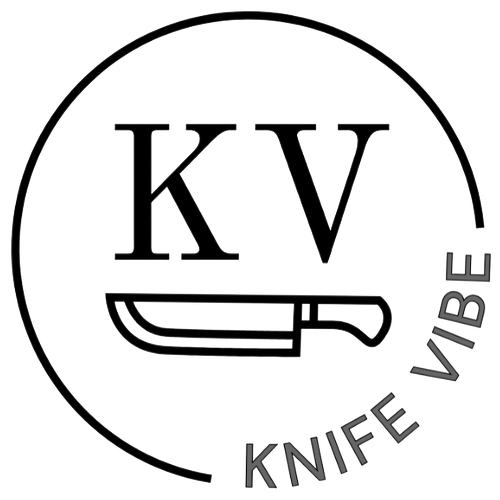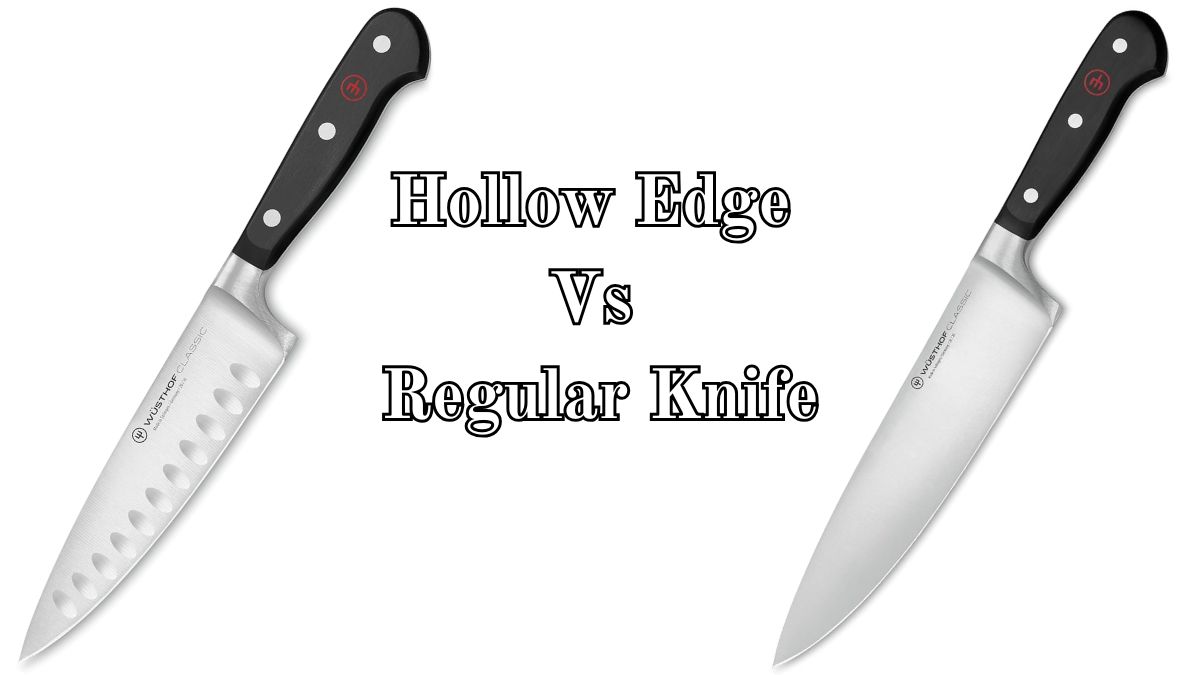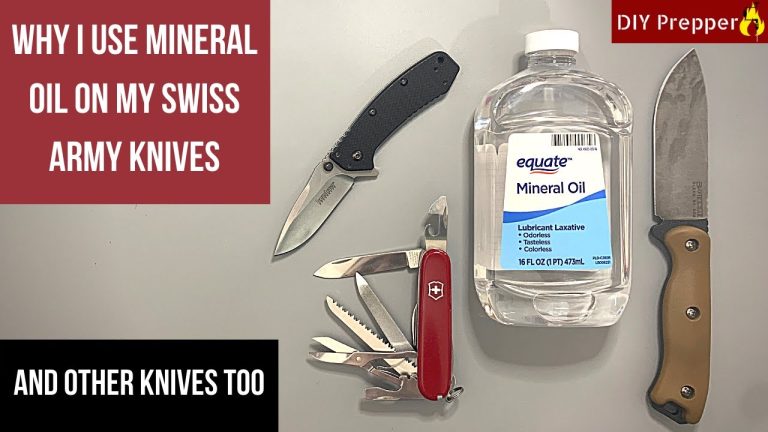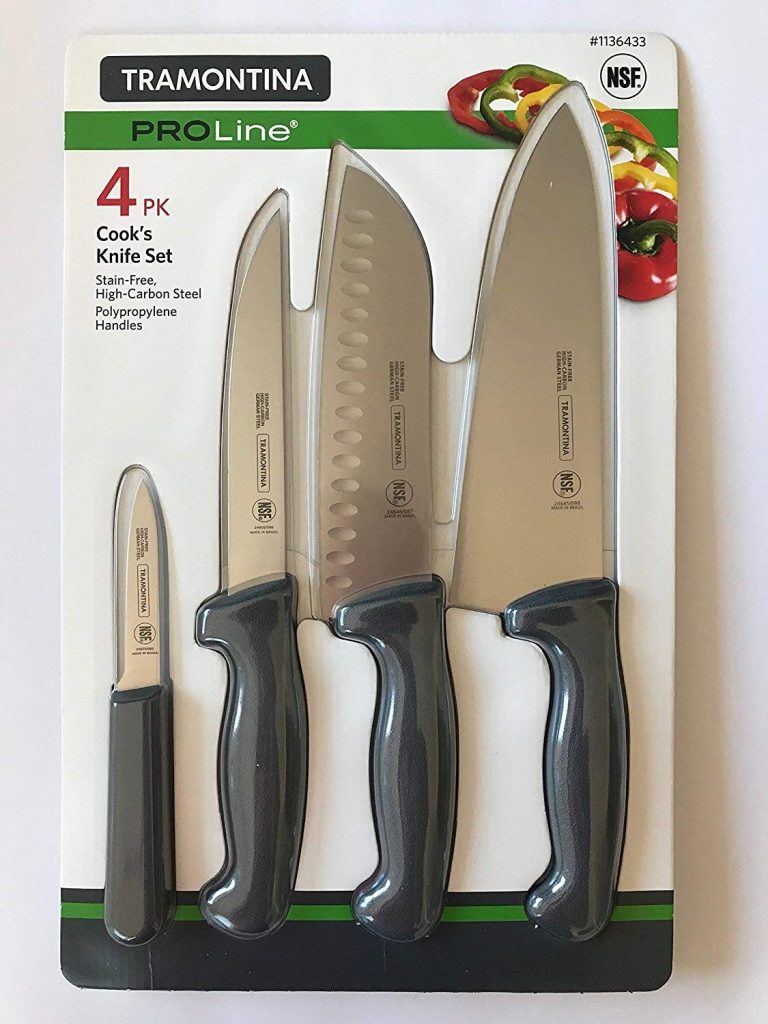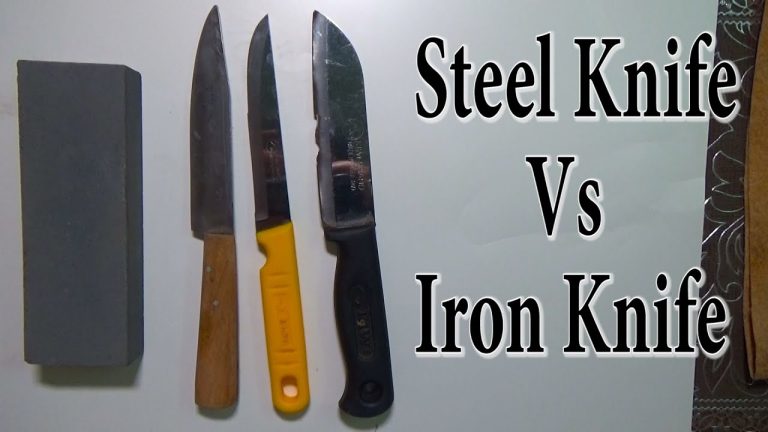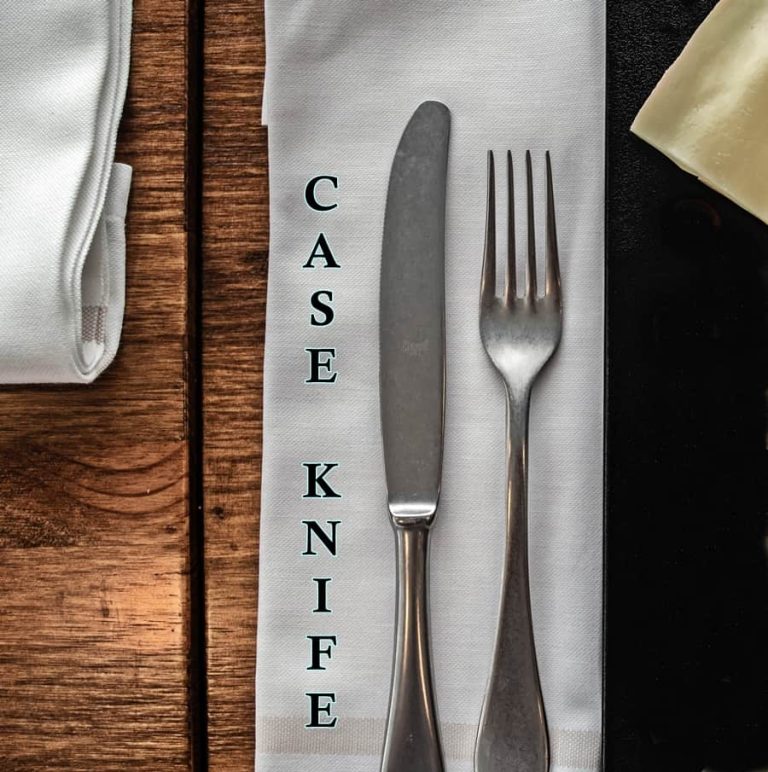Hollow Edge Vs Regular Knife: Which is Best for Your Kitchen?
Choosing the right knife can make a big difference in your kitchen. Two popular options are hollow edge and regular knives.
A hollow edge knife has small indentations along its blade. These create air pockets, which reduce friction and prevent food from sticking. A regular knife, on the other hand, has a smooth blade. It is versatile and can handle a variety of tasks.
But which one is better for you? Understanding the differences can help you make an informed choice. In this blog post, we will explore the features and benefits of both hollow edge and regular knives. By the end, you’ll know which knife suits your needs best. Let’s dive in and find the perfect knife for your kitchen!
Introduction To Kitchen Knives
Kitchen knives are essential tools for any cook. Whether you’re a beginner or a seasoned chef, the right knife can make a significant difference in your cooking experience. The choice between a hollow edge and a regular knife is crucial. Each type has its unique benefits and is suited to different tasks. Let’s delve deeper into the importance of choosing the right knife and the various types available.
Importance Of Choosing The Right Knife
Selecting the proper knife ensures efficiency and safety in the kitchen. A suitable knife enhances your cutting technique and reduces the risk of accidents. It also improves the quality of your food preparation.
The right knife can make chopping, slicing, and dicing tasks faster and more precise. This is especially important for tasks that require attention to detail, such as preparing vegetables or cutting meat. Using the wrong knife can lead to frustration and inconsistent results.
Types Of Kitchen Knives
There are several types of kitchen knives, each designed for specific tasks. Understanding these types will help you choose the right one for your needs.
| Type of Knife | Primary Use |
|---|---|
| Chef’s Knife | General purpose, chopping, slicing, dicing |
| Paring Knife | Peeling, trimming, detailed work |
| Bread Knife | Slicing bread and baked goods |
| Utility Knife | Small tasks, slicing fruits and vegetables |
Each type of knife has its own unique features. For instance, a chef’s knife is versatile and can handle many tasks. A paring knife is smaller and great for intricate work. Bread knives have serrated edges, making them perfect for cutting through crusty loaves without crushing them. Utility knives are smaller than chef’s knives but larger than paring knives, making them ideal for medium-sized tasks.
Understanding these differences will help you build a well-rounded knife collection. This ensures you have the right tool for every kitchen task.
Understanding Hollow Edge Knives
Hollow edge knives have gained popularity among home cooks and professional chefs. Their unique design and functionality make them a valuable addition to any kitchen. These knives are different from regular knives due to their distinctive blade features.
Design And Features
Hollow edge knives have a series of small indentations along the blade. These indentations are called ‘hollows’ or ‘granton edges.’ They run parallel to the cutting edge of the knife. These hollows create air pockets between the blade and the food.
Because of these air pockets, the knife cuts smoothly. Food does not stick to the blade, making slicing easier and faster. The blade is usually made from high-quality stainless steel. This ensures durability and a sharp edge for a long time.
Advantages Of Hollow Edge Knives
One major advantage is the ease of cutting. The hollows reduce friction, allowing for smoother cuts. This is especially useful for slicing sticky or moist foods like cheese, potatoes, and cucumbers.
Another advantage is improved precision. The knife glides through food with less effort, giving you more control. This makes it ideal for tasks that require fine, precise cuts.
Hollow edge knives also stay sharp longer. The reduced friction means less wear on the blade. This results in a longer-lasting edge, reducing the need for frequent sharpening.
Additionally, these knives are versatile. You can use them for a variety of kitchen tasks, from slicing vegetables to carving meats. This makes them a valuable tool in any kitchen.
Exploring Regular Knives
Discover the difference between hollow edge and regular knives. Hollow edge knives reduce friction for smoother cuts. Regular knives offer durability for daily tasks.
Regular knives are common in every kitchen. They are versatile and reliable. Understanding their design and features helps in choosing the right one.
Design And Features
Regular knives have a simple and straightforward design. They come in various sizes and shapes. The blade is usually smooth and straight. The edge is sharp and effective for many tasks. The handle is ergonomic, providing a good grip.
Advantages Of Regular Knives
Regular knives are easy to use. They handle most cutting tasks well. They are durable and long-lasting. Regular knives are also easier to sharpen. They are affordable and widely available. These knives are a staple in any kitchen. Their straightforward design makes them reliable tools.
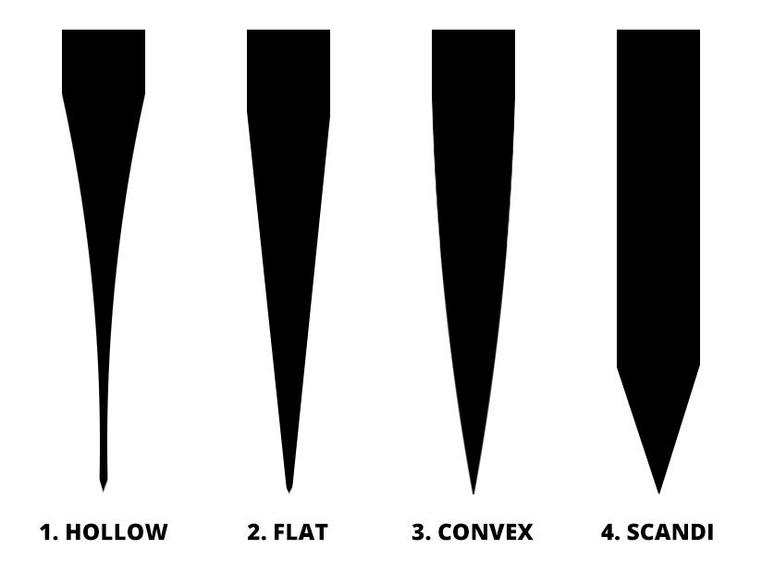
Credit: www.knivesandtools.com
Comparing Cutting Performance
Choosing the right knife can make a big difference in your kitchen. Hollow edge knives and regular knives each have unique features. Understanding their cutting performance can help you decide which one fits your needs.
Performance With Different Foods
Hollow edge knives have small indentations along the blade. These indentations create air pockets. This helps prevent food from sticking. When slicing vegetables, the hollow edge knife is less likely to crush soft items. It glides through tomatoes and cucumbers smoothly.
Regular knives have a smooth edge. They are versatile and can handle most foods. They work well with meats and harder vegetables. Chopping carrots and potatoes is easy with a regular knife. But, softer items may stick to the blade.
| Food Type | Hollow Edge Knife | Regular Knife |
|---|---|---|
| Soft Vegetables (e.g., tomatoes) | Excellent | Good |
| Hard Vegetables (e.g., carrots) | Good | Excellent |
| Meat | Good | Excellent |
User Experience And Comfort
Hollow edge knives are lightweight. This makes them easy to handle. The air pockets reduce friction. Cutting feels smooth and effortless. Many users find them comfortable for extended use.
Regular knives are often heavier. Some people prefer this weight. It gives a sense of control. They feel sturdy and reliable. They might require more effort for some foods. But, they are well balanced and fit well in the hand.
Both types of knives have their strengths. Consider your cutting tasks and comfort preferences. Choose the one that best meets your needs.
Maintenance And Durability
Maintaining your knives is essential for their longevity. Regular and hollow edge knives each have different needs. Let’s explore how to care for them and ensure they last long.
Sharpening And Care Tips
Proper sharpening is vital for any knife. A regular knife requires frequent sharpening. Use a whetstone or a honing rod for best results. Sharpening keeps the edge precise and effective.
A hollow edge knife needs less sharpening. The hollow indentations reduce friction. This keeps the edge sharper for longer periods. When sharpening is needed, use a whetstone. Avoid electric sharpeners. They can damage the hollow edges.
Care tips for both types:
- Hand wash knives with mild soap and water.
- Dry immediately to prevent rust.
- Store in a knife block or magnetic strip to avoid dulling.
Longevity And Wear
Regular knives are durable but can wear out faster. Frequent sharpening can thin the blade. Heavy use may lead to chipping or breaking.
Hollow edge knives tend to last longer. The design reduces wear and tear. Less friction means less damage over time. They remain sharp with minimal maintenance.
Both types need proper care to ensure their longevity. Choose the right knife for your needs. This will reduce maintenance efforts and extend the life of your knives.

Credit: www.cheftalk.com
Cost Considerations
Choosing between a hollow edge knife and a regular knife involves understanding their costs. This section will help you compare the price ranges for both types. Understanding these costs can help you make a better decision.
Price Range For Hollow Edge Knives
Hollow edge knives often come at a higher price. They can cost anywhere from $30 to $200. High-end models can even exceed this range. These knives are known for their unique design. This design helps reduce friction while cutting. As a result, they are more expensive than regular knives.
Price Range For Regular Knives
Regular knives usually have a broader price range. You can find them between $10 and $150. Budget-friendly options are widely available. High-quality models might cost more but still less than some hollow edge knives. Regular knives serve well for everyday kitchen tasks. They are often more affordable.
Best Uses For Each Knife Type
Choosing the right knife can elevate your cooking experience. Hollow edge and regular knives each have their own best uses. Understanding these can help you decide which knife to use for specific tasks in the kitchen.
Ideal Scenarios For Hollow Edge Knives
Hollow edge knives feature indentations along the blade. These indentations create air pockets. This helps food slide off the blade smoothly. Here are some ideal scenarios:
- Slicing meat: The air pockets prevent meat from sticking. You get clean, precise cuts.
- Cutting vegetables: Hollow edge knives are great for soft veggies like tomatoes. They ensure smooth, clean slices without crushing.
- Cheese: Use these knives for semi-soft cheeses. The indentations reduce sticking and make slicing easier.
Ideal Scenarios For Regular Knives
Regular knives have a smooth blade edge. They excel in tasks that need more force or precision. Consider these scenarios:
- Chopping vegetables: Regular knives are perfect for hard vegetables like carrots and potatoes. They offer control and power.
- Butchering: Use regular knives for tasks like cutting through bones. Their strong blade handles tough jobs.
- Fine slicing: Need thin, delicate slices? Regular knives provide the precision you need for tasks like filleting fish.

Credit: www.wusthof.com
Choosing The Right Knife For Your Kitchen
Choosing the right knife for your kitchen can be challenging. You need to consider your cooking style and preferences. Hollow edge knives and regular knives serve different purposes. Understanding their differences will help you make an informed choice.
Assessing Your Cooking Needs
Think about your daily cooking tasks. Do you cut a lot of vegetables? Do you slice meats often? Hollow edge knives have divots along the blade. These create air pockets. This helps prevent food from sticking to the blade. They are great for slicing vegetables thinly.
Regular knives have a smooth, continuous edge. They offer more control for precise cuts. If you need an all-purpose knife, a regular knife might be better. Consider what types of foods you usually prepare.
Making The Final Decision
Consider your comfort and ease of use. Hollow edge knives can make cutting smoother. They reduce friction and stickiness. Regular knives provide more versatility and control.
Think about your budget too. High-quality knives can be expensive. Choose a knife that fits your cooking needs and budget. The right knife will improve your cooking experience.
Frequently Asked Questions
What Is A Hollow Edge Knife?
A hollow edge knife features small indentations along the blade. These indentations reduce friction and prevent food from sticking. This design improves slicing efficiency.
How Does A Regular Knife Differ?
A regular knife has a smooth blade without indentations. It may cause more friction and food sticking. This can make cutting tasks slightly harder.
Which Knife Is Better For Slicing?
A hollow edge knife is better for slicing. The indentations reduce friction and improve food release, making slicing easier.
Can Hollow Edge Knives Cut All Foods?
Yes, hollow edge knives can cut most foods. They excel at slicing meats, vegetables, and cheeses without sticking.
Conclusion
Choosing between a hollow edge and a regular knife depends on your needs. Hollow edge knives reduce friction, making slicing easier. Regular knives offer versatility for various tasks. Both types have their benefits. Consider your cooking style and preferences. Try using each to see what works best.
A good knife enhances your kitchen experience. So, invest in the right one for you. Whether hollow edge or regular, a quality knife makes a difference. Happy cooking!
